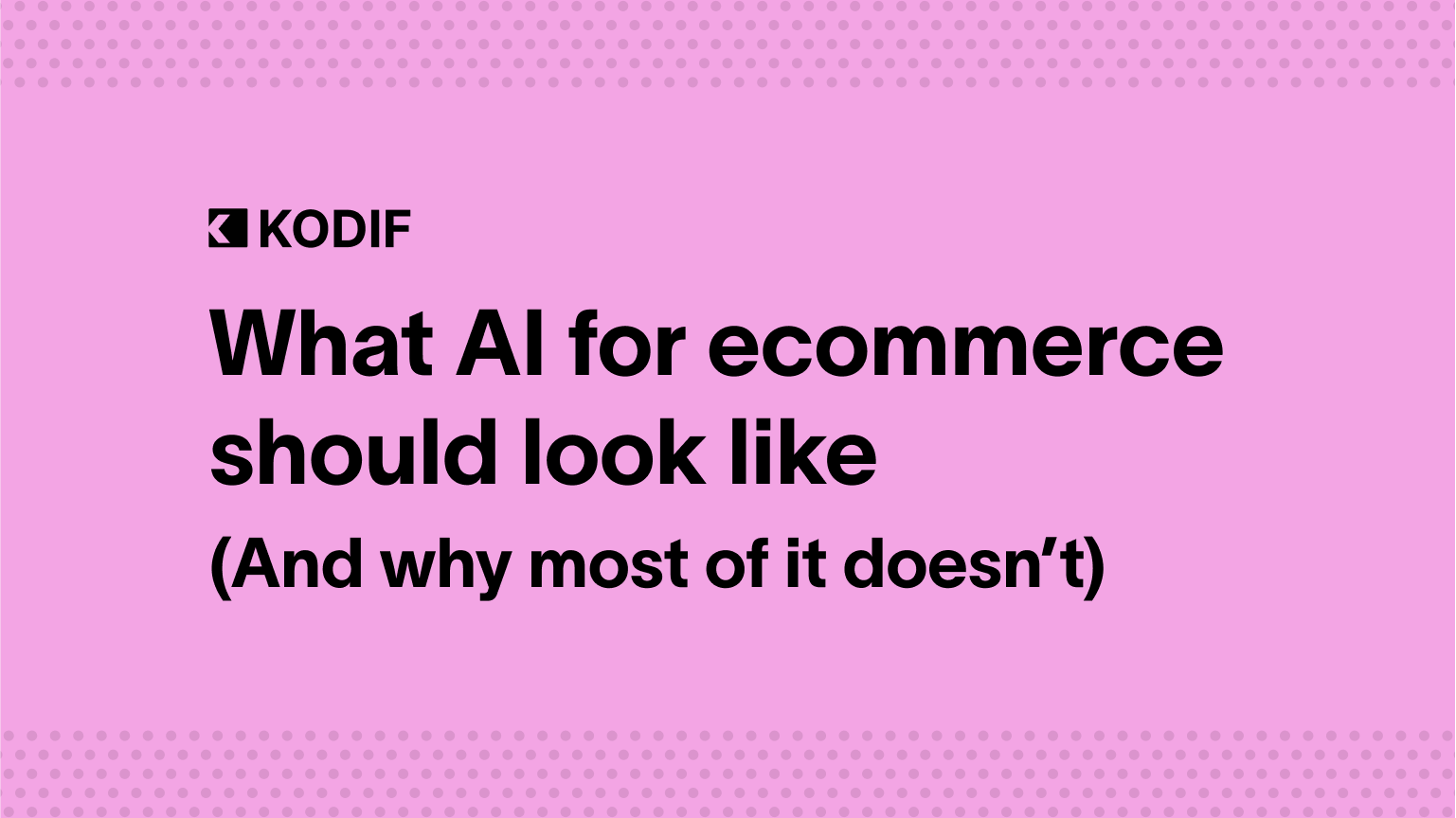If you’ve been anywhere near a demo call, a VC pitch deck, or LinkedIn in the past year, you’ve probably heard some version of this:
“Our AI revolutionizes ecommerce support with 24/7 automation, end-to-end resolution, and seamless omnichannel experiences.”
Sounds great. Except when you actually need a refund and the AI responds with:
“Hi there! What can I help you with today: Order status, returns, or general inquiries?”
You click “Returns.” You get a link. The link doesn’t work. You sigh. You email. You wait.
And somewhere in the world, a team celebrates their deflection rate going up.
This is the disconnect.
AI isn’t failing because the tech is broken, it’s failing because most platforms are built for the idea of automation, not the messy, nuanced reality of ecommerce support.
The promise vs. the reality of ecommerce support
When ecommerce brands talk about bringing AI into their CX stack, they’re usually sold on three promises: faster responses, 24/7 coverage, and reduced costs.
What do they usually get? A lot of templated flows, vaguely “smart” bots, and support experiences that feel more like a rerouted call center from 2004 than anything futuristic.
Customers get stuck in loops, agents have to pick up the pieces, and support teams end up with one more tool that kind of works, but mostly just makes reporting more complicated.
We don’t blame the teams. We blame the tools.
What ecommerce teams actually need
Most ecommerce support teams don’t have time to build AI from scratch. They don’t want to draw decision trees. And they definitely don’t want a 90-day onboarding roadmap that ends with “value realization pending.”
(If you do actually want any of these things for some reason, we’re listening and not judging, by the way).
They just want a system that understands ecommerce.
That means AI that knows how to:
- Handle common questions like order status, subscription changes, and returns
- Use customer history to respond with actual context
- Automate actions directly with tools like Shopify, Gorgias, Recharge, Klaviyo, etc. without duct tape or dev time
- Help agents and managers see what’s working, what’s breaking, and where customers are getting stuck
This isn’t wishful thinking, we promise—it’s table stakes.
What does good AI for ecommerce look like?
At KODIF, we think it should look like a teammate, not a gatekeeper. One that knows the customer, understands your systems, and helps your team, not replaces it.
That’s why we built our platform with two core roles in mind:
AI Agent: Think of this as the frontliner. It doesn’t just reply—it resolves. It can pause a subscription, check order status, initiate refunds, and update addresses, all without a human ever getting involved.
And because it’s pulling from real-time data (not just an FAQ doc), it doesn’t make your customers repeat themselves.
AI Manager: The brains behind the scenes. It reads every ticket, flags patterns, identifies where customers are getting stuck, and helps you find blind spots—like tone mismatches or policy gaps—before they turn into churn.
It doesn’t just flag trends—it notifies you of them in real time, and gives teams the data they need to fix flows, tune automations, and improve policies. Think of it as your internal churn radar, running 24/7.
And yes, it’s configurable without engineering. Because in the beautiful year of 2025, “no-code” shouldn’t be a differentiator anymore, it should be the default.
What to avoid (a short field guide to AI red flags)
If you’re evaluating options, here’s how to spot the ones that might look polished on the surface but come with hidden homework:
- If it asks customers questions when you already have the answers stored in your data—bad.
- If “Shopify integration” actually means five Zapier workarounds, it’s not ready.
- If the tone sounds like Clippy, and escalation means “try again later,” run.
- If the AI can’t explain why it gave an answer, it’s not accountable.
- And if you need a dev team to update a return policy… well, you get the idea.
If the goal is to make support simpler, not slower, then your AI shouldn’t come with a user manual written for engineers.
Choose tools that work like your team works—fast, flexible, and focused on actually helping customers. Everything else is just technical debt in disguise.
What you can do right now (even if you’re not ready to switch platforms)
You don’t need to rip out your whole CX stack to start improving things today. There are steps you can take immediately to make your support more intelligent, more empathetic, and more effective:
- Start with your biggest pain points. Where are customers getting stuck? Where are agents copy-pasting the same replies? That’s your automation starter pack.
- Look for context gaps. Are your bots asking for info you already have? That’s friction you can eliminate.
- Segment your tone. Not every customer wants cheerful. If someone just got refunded after a bot failed them twice, maybe tone it down.
- Surface data better. Your agents shouldn’t have to hunt for history. Give them full visibility—orders, interactions, sentiment—in one view.
- Measure more than deflection. Track resolution. Track satisfaction. Track whether your automation is helping or just rerouting the problem.
TL;DR: Good AI doesn’t just sound smart—it acts smart
The future of support isn’t another chatbot with a pretty front-end. It’s systems that remember, adjust, and actually get things done on the first try.
And for ecommerce? That future needs to be fast, deeply integrated, and actually helpful.
If your AI isn’t reducing effort, increasing trust, and freeing up your team to focus on the work that matters, you don’t need better AI. You need a better approach.
(And if you want to see how KODIF fits into all of this, you know where to find us.)









